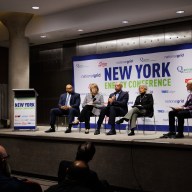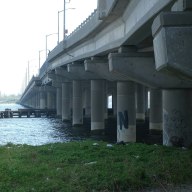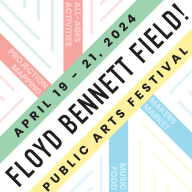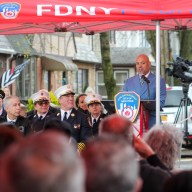Even the remotely artistic desires change – without transformation, art stagnates and drowns in past glory. The most dramatic artistic revolutions happen by force.
To say that the collective thought process of the global citizenry changed on September 11, 2001 would be an understatement – a grossly ignorant diminution of the thoughts, fears and motives of those both involved and victimized that day.
Instant 180s occurred in the minds of everyone from artists and musicians to bus drivers and zookeepers. Previously held perceptions burned and priorities were refocused and intensified.
Prior to 9/11, local Long Island City artist Lisa Zilker was working on her own issues and her priorities were on a different wavelength – then, her thoughts were invaded.
She channeled the resulting noise into the drive she needed to transform her work.
“When 9/11 happened, something switched for me,” she said. “I went back to my old way of working.”
Her first painting after the terrorist attacks, “9/18/01” (cover), is the artistic moment that she decided to expose the nuanced ways in which outside influences can force change.
“The jagged splits [in the painting] symbolize how our lives were invaded. You try to be who you are and then someone or something interrupts your thoughts and personal interactions,” she said. “Everyone wants to be in control of their own lives. The invasion happens and people lose control of their lives. Nobody wants that. It’s uncomfortable and doesn’t line up with our personality as Americans.”
Zilker’s latest work is all about conversations and interactions within society and the noise that tends to drown out what is truly being said. The artist, from her studio on 21st Street, struggles with the question of good noise versus bad noise – how is either identified and what does the noise consist of.
“This noise is based on interactions beyond our control, i.e. planetary, mental, emotional, physical and metaphysical,” she said, commenting on her current series, “Conversations between Blue and Red.” “As the grid is removed, all we are left with is the noise. Leaving us with the pain, control, order and reductionism, the practice of simplifying a complex idea, issue, condition, or the like, especially to the point of minimizing, obscuring or distorting it. This is what my focus is.”
The grid Zilker speaks of refers to her work process. Each and every project she takes on is first meticulously drawn out on graph paper – to perfect, mathematical scale – before being transferred to a grand canvas.
“The interaction of color, depth of space and emotional states continue to interest me. My most recent works have become grid based paintings with organic and botanical shapes which are more simplified – the resulting compositions are intricate and extremely energetic,” she said. “This series depicts longitude and latitude giving a sense of place – the grid – the jagged split represents noise; all types of noise.”
Painting with blue and red for a really long time, Zilker said that those two colors cover a broad swath of emotions and subject matters.
“For me those two colors symbolize politics and every possible emotion and even birth and death,” she said. “There’s an interesting dynamic between the two colors. Red is my favorite color, but politically I’m blue. They have deep meanings for me, spiritually.”
But while her processes are exact and intricate, the product is of the utmost importance.
“It’s the only way to express what I’m trying to say,” she said of her finished products. “I’ve been a perfectionist my entire life. If I’m going to do something, I may as well do it to perfection.”
That attitude also informs other aspects of Zilker’s life. Besides her own artwork, she also hosts a Podcast and has taught private art lessons. Her meticulous nature makes her a keen teacher, but it also means that she believes in her own knowledge – making authority a hindrance rather than a help.
“I haven’t taught in any public schools because I don’t want anyone to dictate what I have to teach,” she said. “It comes from my problem with authority I’ve had my whole life. You tell me not to do something and chances are I’m going to do it. I play well with others, but I am very individualistic.”
Her Podcast, “The Lisa Lisa Show,” mainly consists of running commentaries on art, philosophy, a thought of the day, history, science and basically anything that holds her interest. To give her show a listen, visit https://www.Blogtalkradio.com/lmzilker/2011/08/31/the-lisa-lisa-show. The show’s style is very free form and flows with whatever falls from her consciousness at any given moment.
And at this moment, Zilker’s consciousness directs her towards her art. She wants her work shown around the world – especially at MoMA – and she wants people to be pulled in to the art, but also wants them to take something from it. Unfortunately, the artist’s lament is similar to the writer’s lament, in that money is always an issue.
“I want to be able to do what I want. I don’t want to be locked into anything,” she said. “The problem is that I can’t find the funding to do what I want.”
But money – along with every other shallow aspect of life – is purely noise. It doesn’t enlighten life, but only complicates it and breeds headaches in those who lack its green power. Zilker said she doesn’t know where this journey is taking her, but she does believe in taking everything to its logical limit.
“It’s about getting beyond the noise of daily life and getting down to deeper conversations,” she said. “And that’s hard to do. It’s rare when you can get deeper with people because the sad truth is, most people just aren’t that deep. The noise I’m painting is the shallow nonsense of everyday life. If we can somehow get passed that noise, we can start to hear the sounds that matter.”






























